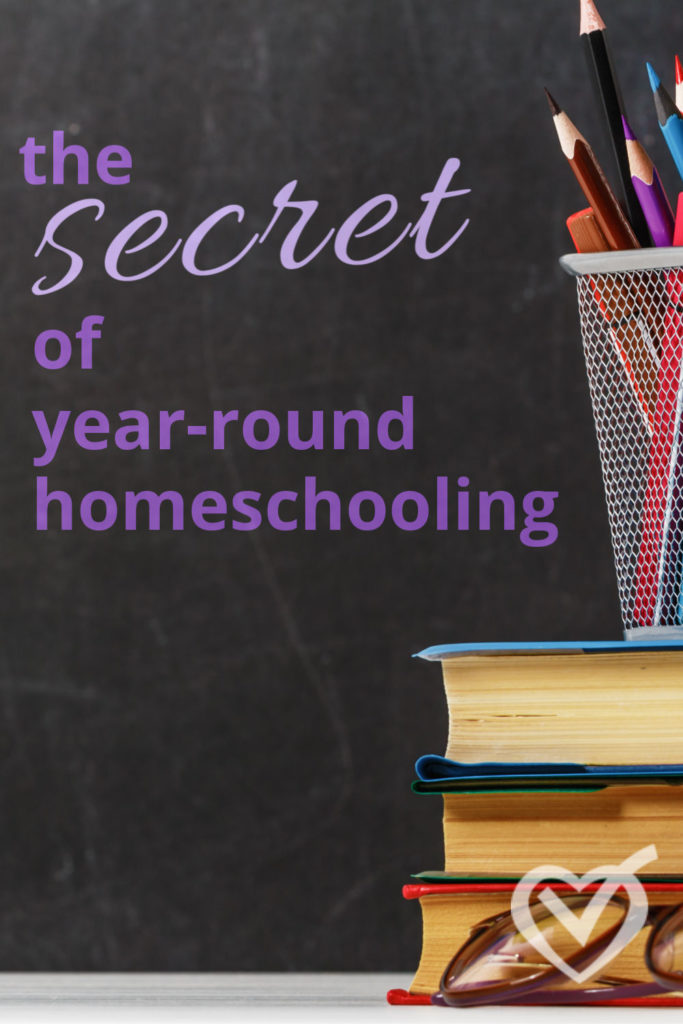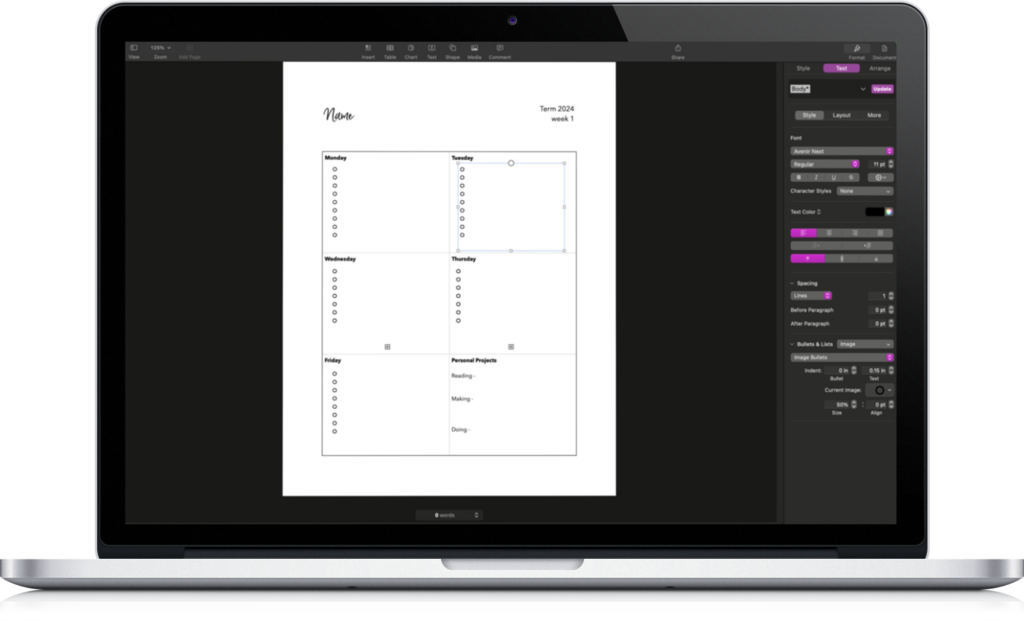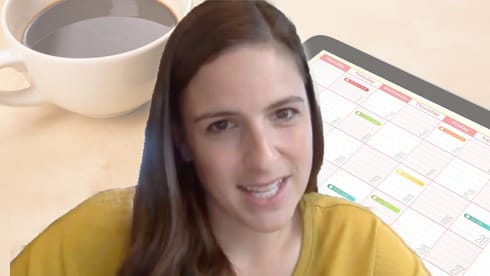The Secret of Year-Round Homeschooling

We have used a year-round homeschool schedule for over twelve years – for all of our homeschooling years to date. I believe it makes both planning and living a homeschool lifestyle easier and better. Here’s the scoop on the why and the how of homeschooling year-round.
Yes, we are those sorts of homeschoolers who school year-round. It seems like people interpret this to mean we are always school, school, school. The truth is that I school year-round so I can have more of a break, not less. I think that having solid school weeks from January until April would require me to take antidepressants, or maybe just turn to rum – at 10am. No one wants either.
Ideally, I’d actually sorta sometimes enjoy this life with my little people, and so we keep a year-round schedule. That is, we school for six weeks, then take a week off. We take a week off for Thanksgiving. We take three weeks off for Christmas. We take off two weeks in February, which is the best antidote for the February Blues. We take off the month of June.
Sure, we’re doing school in July, but we’ve had numerous vacation weeks while everyone else is in school – which is also nice, because we have the stores, the park, the zoo at their uncrowded times that way.
How many weeks do you homeschool?
A common question when someone begins to homeschool, whether they’re considering a year-round schedule or not, is how many weeks go into a typical homeschool year. Conventional schools vary, but are typically 36 planned weeks. Some states regulate how many days homeschoolers must keep attendance, and that number is usually 180, which would equal 36 weeks.
Typical curriculum across subjects and methods have between 30-36 weekly lessons for a year, as well.
So one way to homeschool “year round” would be to simply keep track of the days you log lessons and count it as a school year when you hit that magic number, 180.
That’s not the way we school year round, however, for two reasons:
- I try to use real, whole books for our curriculum as much as possible, and those are not broken down into weekly units. So, I have to do the scheduling and planning.
- I would take days off according to how I felt and be left scrambling in the summer to make up days lost due to self-indulgence.
Instead, I plot out our year-round homeschool schedule in such a way that we always have a truly free break from school coming soon. Knowing this allows us to buckle down and focus, to get our work done in the time allotted, and to not feel like school is unending drudgery.
Let’s do a little math and see just how much flexibility is possible if we plan for a 36-week school year.
- 52 weeks in a year, minus 36 school weeks, leaves 16 vacation weeks to plan.
- 36 divides into 6, 6-week terms neatly, which also allows us to hit the halfway point at the end of the year if we have 3 terms before and after Christmas break.
- 6 weeks for summer vacation is still plenty to have a real rest, and leaves us with 10 weeks of break.
- 5 weeks off for Christmas is generous and allows us to celebrate and enjoy the season and do other things halfway through the year. We still have 5 weeks of vacation left.
- With 5 weeks of vacation left, we have enough to have 1 between the remaining 6-week terms that don’t already have a summer or Christmas break.
So, you’ll see that a year-round homeschool schedule does not mean you’re constantly schooling or that you never take an extended break. It is just a different way of spreading out the vacation time in a way that makes much more sense for a full, well-rounded, busy family life.

The Benefits of Schooling Year-Round
- Common problems like February burnout happen less often and less intensely, because we get regular breaks and don’t stretch our endurance to the breaking point. There is always the light of a break week shining near at hand.
- Moreover, our breaks don’t stretch on and on in one big summer-long mess of chaos and lack of routine. We don’t have to spend a bunch of time reviewing to catch up at the beginning of the year, because the information and skills stay fresh and in use.
- With breaks regularly scheduled throughout the year, we can take advantage of off-season vacations and empty parks.
- We can concentrate our breaks around when the weather here is consistently pleasant all day, rather than having a summer break where everyone is inside most of the afternoon hanging over the air conditioning.
A year-round homeschool schedule allows us to live life throughout the year in a less hurried and harried manner.
How to Make a Year-Round Homeschool Schedule
Some begin their year-round schedule in January, thus making Christmas break the end of the year break as well. With an extended break both at Christmas and in the summer, this makes sense and can work for many families.
However, Christmas is not when I want to be school planning or buying all our new school books and materials. So we follow the typical pattern of ending our school year in late spring, although we begin in the summer rather than the fall.
When we first started homeschooling, I began in August because that was the month my oldest turned six and also when the school supplies are ubiquitous.
Eventually, I decided that I wanted to take the month of June off for our summer, end-of-year school break (June is always lovely here, and it is my birthday month). That meant that we’d start school in July.
This pattern has worked for us for over a dozen years.
School Terms for Year-Round Homeschooling
Because it’s the way I do things, our terms have names.
- Summer Term
- Harvest Term
- Autumn Term
- Winter Term
- Spring Term
- Verdure Term
That gives us 36 weeks of school, leaving 16 weeks for breaks. There is a sanity-saving one-week break between each term, plus I always try to arrange the terms to end by the longer breaks: Christmas, Easter, and then the end. We take off a Thanksgiving-New Year break, a mid-May through June summer break. Some years our between-term break can land around Easter, other years we’ve arranged it to match the school district’s spring break, and some years it’s been not a holiday break but a baby break.
I love having the frequent off-week for catching up around the house, in the kitchen, and with the papers; plus, I have the margin for returning library books, getting the new ones, and shifting around our hymns and memory work.
Time for housecleaning catch-up and projects is one of my favorite things about a year-round homeschool schedule.

I‘d love to share five of my favorite homeschool templates with you.
Beat Burnout with Year Round Homeschooling
Whether we’ve found the perfect curriculum or not, whether we’ve collected the right homeschool resources or not, whether we stay adequately caffeinated or not – homeschooling is hard work. The books and the checklists are not the secret to beating homeschool burnout. The secret is year-round homeschooling.
In Teaching from Rest, Sarah Mackenzie mentions several strategies for building peace and joy into a homeschool. One of the strategies she mentions is the sabbath model school calendar: Six weeks of school is followed by one week of break.
“One way to rearrange the schedule is to take advantage of the creative freedom you have regarding your calendar. For example, a year-round school schedule with frequent breaks may be a wonderful fit for your family dynamic. I know many homeschoolers who teach for six weeks, followed by a full week off. This breaks the school year into manageable terms, and lets both teachers and students commit to their work for a time without ever going so long that they get completely burned out.“
Sarah Mackenzie, Teaching from Rest
Whether you call it sabbath model, sabbath homeschooling, year round homeschooling, interval training, or just life, I highly recommend considering this method for arranging your year.
One reason why February is so brutal for homeschool moms, I believe, is that we begin back up with school in January right after Christmas. Supposedly Christmas was a vacation, but in reality it was a hurly-burly of work, busyness, and expectations.
December is a time of activity and variety, fraught with stress and extra work for mothers, the ones doing the baking, planning, gift-buying, and general holiday-making.
After the whirl and blur, we crash into gray hum-drum school days.
Then comes 6-8 weeks straight of mundane routine, with many more weeks to go until Spring Break. We want to throw in the towel on all our responsibilities. We are just plain tired.

At that point, a week off school is exactly what is needed. The 6-week-term school calendar acknowledges that, plans for it, and orders it. This school plan is arranged to provide for mental health days weeks – and they are good not only for the teacher, but for the students, also.
More than once in our house a child has struggled with a concept, full of tears and frustration, but after a break week they return to that concept and it’s clicked. They’ve let go of the anger and stress, and when they return, they are fresh enough to realize it wasn’t as hard as they’d been making it.
The same thing happens for mom. When the homeschool days get to be overwhelming and overpowering, a week off – a week in which to catch up on the housework, to get those errands done, to go for walks and to the park, to have fun family days, to do things because we want to and not because we have to – does much to reset attitudes.
That’s how we prevent burnout.
We can homeschool from rest when we build rest into the rhythm of our homeschool calendar.
What is Year Round Homeschooling?
I don’t care much for the name “sabbath schooling.” It sounds like Sunday School, which totally unrelated. We aren’t homeschooling on the sabbath. However, we do take the pattern of 6-then-1 that God modeled in creation and apply it to our school year calendar. It is a proportion of labor and rest with precedent.
I’ve also called it Year Round Homeschooling. When we begin our year in July, not long after most schools have just let out, everyone seems to assume we are simply always doing school, like real hard-core troopers. Nope.
However, we take Thanksgiving through New Year mostly off and we finish up in May. So while others are still climbing onto the school bus, we have the parks and the stores to ourselves.
We are definitely not doing school work every week of the year!
No way. Rather, we school according to a different pattern: 6ish weeks of work, followed by a week off. To make it work between holidays or planned vacations, we’ve done anywhere from 5 week to 8 week terms, but 6 weeks does seem to be the optimal length of time – long enough to make definite progress and yet short enough to not feel like we’re in a never-ending hamster wheel.
My own mom followed this pattern for a number of years back when I was elementary age, and I loved it then as I do now. Other older homeschool moms also recommend this method. One of the first placed I ever saw this schedule written about was in Christine Miller’s article, “Beating Homeschool Burnout,” where she writes:
“f you are burnt out because you are tired, then take a week or two off of schooling! Sleep, rest, and do some fun stuff with your kids. Get the laundry and the cleaning caught up. It’s amazing how strongly clutter, and those nagging unfinished jobs in back of our minds, can sap our energy. Make a dent in the stack of papers needing grading and filing. Taking some time off will not hurt the kids. The only consequence is that you will finish school a week or two later than you planned in the summer.“
Christine Miller
Another convincing perspective is from Angelina Stanford who writes in “And on the Seventh Day God Rested: Using the Principle of the Sabbath to Organize Your School Year”:
“So, if I don’t follow the public school year, what do I do? And what does this have to do with the Sabbath? I believe that the Sabbath teaches three important principles for the homeschool. 1) We are free; therefore we can rest. 2) We need regular, scheduled periods of rest. 3) My soul responds to the pattern of laboring for 6 and resting for 1.“
Angelina Stanford
Unfortunately, both these articles are no longer available. They were, however, instrumental in my own development of our homeschool year schedule.

Why We Schedule Regular Break Weeks
Not infrequently, I hear from someone who has decided against the typical school calendar, who knows having breaks is a sanity-saver. “However,” they will say, “We’re just going to take a break when we need it. I don’t plan my break weeks.”
Here’s why I don’t think that’s a good idea.
If I allowed myself to take a break whenever I thought I needed it, I’d homeschool about every other week. Maybe that’s not you, though. Other personality types will be more likely to keep pushing, long past the time they should have been resting. Why take a break week when you can make more progress in the books instead?
I’ll tell you why: that break week is time for the information to percolate, time to just be a family and spend low-key time together, time for growth to happen. You know muscles need a break to recover and grow after exercise, right? School is exercise and a break week is time to recover and grow.
We need to put those breaks on the calendar to give our kids hope. We also need to put it on the calendar so it is not a matter of negotiation. What we don’t want is the children to discover they can get out of school by wearing mom down with whining and resistance.
With a break on the calendar, we can all push through when we’d rather not. We can take a break before we break down. We can take a break without guilt or shame or doubt.
We can be confident about what we’re doing, whether it’s school or other projects, because it’s all been determined beforehand.
Year-Round Homeschooling Rhythms
With a six-week term we have a sprint. It is long enough to make progress, and short enough that the end is in sight even from the beginning. There is no long tunnel with a tiny speck of light at the end. Instead, there’s a finite track, and we know we can make it to the end.
I have my projects I want to do. I have my other responsibilities that need a little extra attention.
The children have their own projects they want to do. They want to exercise their independence and freedom and have more say over their day.
We both know there is a time for that, but school weeks are not those times. We can look forward to having a week with longer stretches of prime time to do what we want to do, while zeroing in on what’s currently in front of us right now.
“This isn’t forever,” a 6-week term promises. And we all appreciate that promise, that ray of hope.
I believe that sometimes the discouragement and resistance our kids sink into comes from the feeling that they have no power over their day and that this daily monotony will be unending. They see no end to it, so they zone out and shut down. With a year round schedule we can show them a calendar and say, “These are school weeks. We will do our work and do it well. This is a break week. What would you like to do on our next break week?” They will respond to that encouragement, and so will we.
What Happens on Break Weeks
Break weeks are not all binge-reading & cocktails. Sorry. Break weeks are a break in the routine, they are a school break, but they are not pure vacation and time off.
After all, a mother’s work is never done.
However, a change is as good as a rest. It’s a proverbial English saying for a reason.
Changing things up for a week, spending longer chunks of time working on needed projects, getting the house back under control, running those errands that were nagging you, and, yes, reading a really good book, are all things for break weeks. When I really want to take the day off to catch up on laundry (a sure sign something is wrong), or when a book really calls my name and I know I’ll ignore life for 34 hours if I pick it up, I can stop and say, “Can I wait for break week?” — Delayed gratification is good for us, you know. And you can model it for your kids while you’re also asking it of them.
Here are activities that have populated my break week list over the years:
- clean the kitchen
- sort out my kitchen command center
- prepare some freezer meals
- run errands
- change out our circle time binder pages
- clear out and reorder all the school bins, shelves, and books
- plan for the next term, if necessary
- spend the morning at a park
- go to the library and hang out
- arrange a play day
- go on a field trip
- clear out under the kids’ beds
Yeah, makes you look forward to life, doesn’t it? The great thing about a break week, though, is you can require some extra work in the morning – like clearing out from under beds – in exchange for an afternoon of something fun they can’t usually do – watch a movie, play computer, have friends over, pull out paint, turn on the hose in the dirt pile. Always negotiate. My kids now know and expect that at least one day in the week I will be asking extra work out of them, but it still balances out to a more relaxed and laid back week.
In fact, because we don’t have school, it’s as if that invisible time pressure eases and even extra work doesn’t have that crunch or stress backdrop. We aren’t stealing time in order to address another area. We can spend a longer chunk of time on something without cracking the whip and making the most of every moment.
Even if it’s cleaning out from under the bed, that’s freeing. That’s a break.
The story we tell ourselves matters.
Learn more: Break Week FAQ
How To Plan a Year Round Homeschool Schedule
So, how do we break up the year into six week terms with a break week between? It sounds like it might be tricky, and sometimes we have to fudge on our term lengths to fit them around life, but it’s really not complicated.
We homeschool for 36 weeks, broken into 6 6-week terms. Three of those terms come before Christmas and three come after. It also works perfectly well to count the school year from January to November. I would still plan it out this way:
- I begin by marking Thanksgiving Week as a break week. Then I count back six weeks for a term before the holidays.
- Then I mark a break week the week before the start of that autumn term. Counting back another six weeks, we have our “harvest term.”
- Mark a break week before the beginning of harvest term, then count back six weeks from there. Typically this has us beginning our school year in early to mid July. With our school calendar, these terms are the first half of our year. If you are homeschooling January-November, these are the last terms of your year.
- Next, start on the first Monday of January. Count six weeks out. That is your first term of the year. Mark a break week to follow it.
- The next one is where it gets tricky, because I like to arrange my spring break to coincide with Easter. So I mark where Easter is, count the weeks prior, and adjust in the way that makes the most sense so that a break week does not come mid-term. Sometimes this means taking a 2-week break in February – I like it when that works out!
- Finally, mark your last six-week sprint. You will likely have all of June off and then some. And did you notice no weeks of December were marked?
Sometimes we do only math for December, sometimes we just do other things and don’t sweat it. Our 36 weeks are scheduled and we can have a restful, celebratory December without guilt.
This video by Pam Barnhill demonstrates how to determine your terms:
But We Do Need Sabbath Schedules
Our break weeks are not pure vacation, because we do literally take a day for rest one day out of seven. A break week in a school schedule does not take the place of an actual day off, once a week, to worship and to rest. We can’t save up our rest in that way. This schedule models itself after a 1-in-six pattern, but to do that without honoring the actual 1-in-six pattern God Himself created and commanded will not provide the rest we need.
[pullquote align=”center”]
Six days you shall labor and do all your work, but the seventh is a Sabbath to the Lord your God, on it you shall not do any work.
[/pullquote]
God has already set aside one day a week for us to put aside our striving to get ahead, to plan, to clean, to work. Ignoring that while take one week off every six will still leave you tired and frazzled, because it is God’s rest we need first.
However, with that weekly rest in place, we can still “labor and do all our work” for six days, even during a break week (with more pauses for pure enjoyment and recreation, also). We can use those six days to catch up, get ahead, and move forward without guilt. Then we can take a day of rest and worship and be ready to plunge into the next term, prepared, rested, and ready.
Year Round Homeschool Testimonials
I get a lot of questions about homeschooling for six-week-on, one-week-off, but I also receive emails rejoicing in the new pattern. I want to end by sharing with you some of those comments I’ve received.
“Last year was our first year with the six week interval cycle, and it was a real blessing for us. I have a bigger age range (13 yrs to 20 mo), but they used that week to spend large blocks of time outside or inside building elaborately with Legos. There were also some substantial kid planned and executed art/craft projects too. They were all really excited that we’d be continuing the interval cycle again this year. I didn’t find that we lost momentum at all, instead we were more able to push forward after the break. If anything, I think we were stronger after the break than before it.”
Amber V.
“We’ve been slowly ramping up our school year, and are now in our sixth week. I did intervals for school last year, and found that by week 6 we all really needed a break. Forgetting this when I planned for this year, I thought that our first term would be 8 weeks with the first two being a “soft” opening with minimal subjects. Now I’m reorganizing our interval spacing because I have realized that 6 weeks is really where we need to cut it off.”
Heather T.
“I used your year round term planning method for the first time this year in our homeschool. We are just about to begin our second term, and I love the balanced feeling that term planning has given me.”
Anne
“I am just finishing up my first “rest week.” To be honest, it didn’t feel much different from previous weeks, but I still feel like I’m trying to implement a good system/process. I spent the week planning out this next interval, as well as revising my intervals for the next year….My kids are all little (oldest is five), so there hasn’t been much change to our daily routine, just a change to my focus during the day.”
Emily
Year-round homeschooling is a rhythm for life that will help us all keep our sanity.


